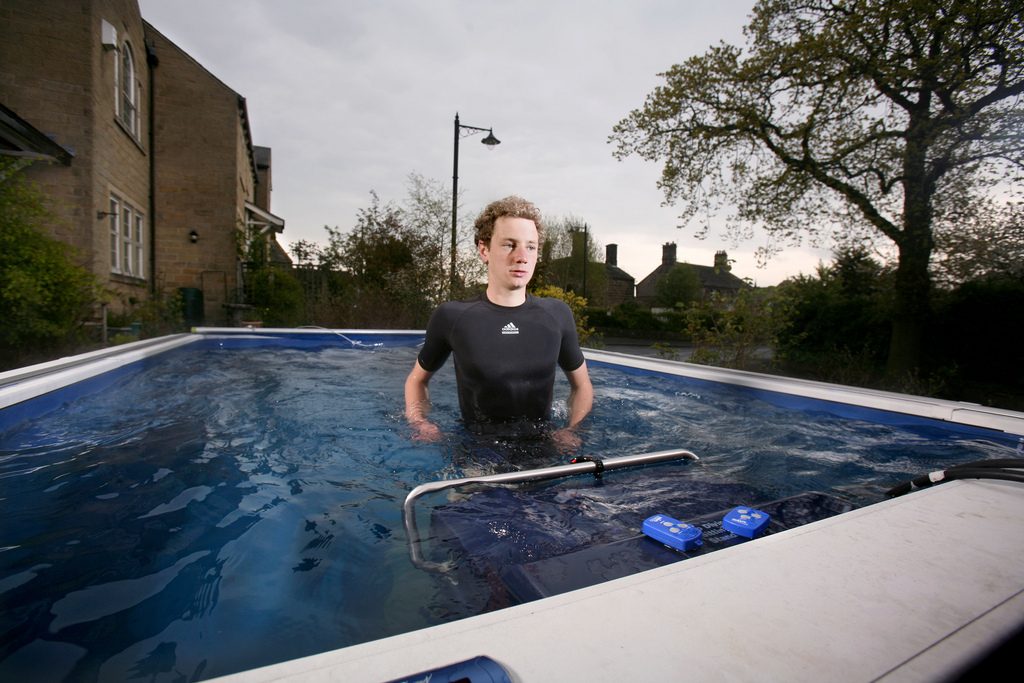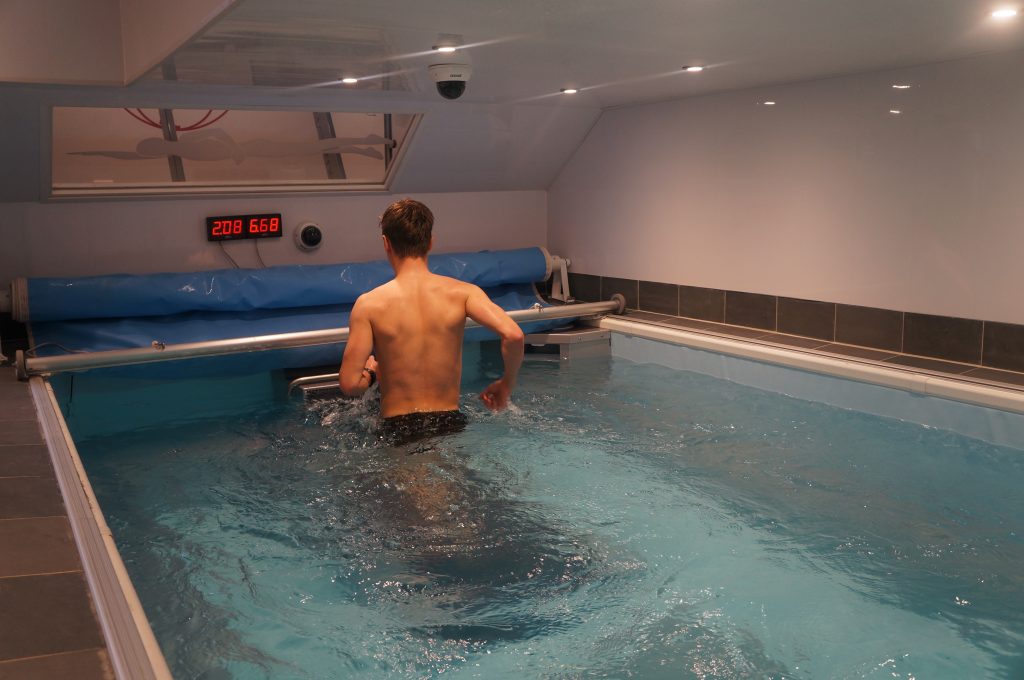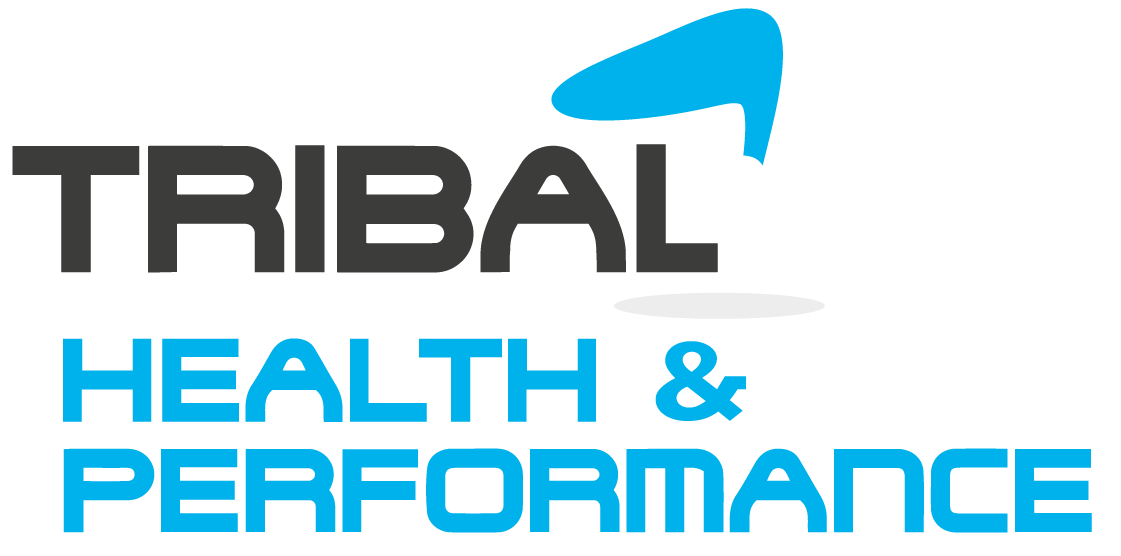Underwater Treadmill
The underwater treadmill at Tribal Health & Performance can revolutionise your physical therapy and sports conditioning. The powered underwater treadmill is integrated into the pool floor and can be used either barefoot or with a light trainer.

“As soon as I started using the Endless Pool, my Achilles stopped getting stiff. That was a massive benefit.” – Alistair Brownlee, 2 x Olympic Gold Medalist Triathlete
The aquatic treadmill smoothly accelerates to your chosen intensity, in addition to the treadmill speed you can add intensity using the resistance jet that sits in front of your hip, you correctly simulate land-based walking, running or sports-specific activities but without the bodyweight and joint impact you experience on land. Exercises such as walking, running, sprinting are easily performed on the large, cushioned treadmill surface. Walking, running and exercising underwater has never been easier.
30 Minutes Hire – Non-Member £12, Member £7
60 Minutes Hire – Non-Member £20, Member £12
Tribal Health & Performance members qualify for 1 x 30 minute Endless Pool hire each week.

The underwater treadmill based at Tribal Health & Performance
The Benefits:
1. Promotes Early Adoption of a full Range of Motion
Older adults with joint and muscle pain may find relief with underwater treadmill therapy. Even though people with chronic conditions like osteoarthritis will often avoid activities such as walking and exercise, these activities can actually make some of the pain dissipate.
For those with chronic pain conditions, the natural hydrostatic pressure of water helps with the healing process. Patients can bear as little as 20% of their body weight while chest-deep in the water. Not only does the water reduce swelling and aid relaxation, but it also relaxes joints, improves strength and boosts flexibility.
2. Initiates Gait Training in a Low Impact Environment
With underwater treadmill therapy, patients can undergo gait training without fear of falling. This helps aging patients feel more successful and recognise greater progression and continuity. Statistically, a third of adults over age 65 suffers a fall each year and is often a result of lack of balance and a weakening of the body.
3. Replicates Proper Biomechanics of Land-Based Movements
The underwater treadmill allows a more natural gait pattern to occur in the water as opposed to in a static pool. Those proper biomechanics that are created in the unweighted environment carry over to land movements.
4. Improved Cardiovascular Stamina
With underwater treadmill physical therapy, lengthier exercise durations are combined with the heightened resistance of the water. This generates greater cardiovascular endurance, which in turn boosts a patient’s on-ground physical stamina. Tribal athlete Wiggy O’donnell used the Endless Pool as a cardiovascular fitness tool after knee meniscus surgery left him unable to perform on land. Soon enough, the underwater treadmill workouts rebuilt his confidence and removed the joint-strain from his knee.
5. Increased Range of Motion
Stimulated by the sensory effects of warm water, patients enjoy more joint and muscle relaxation while using an aquatic treadmill. While underwater, a person’s weight can be reduced by up to 80 percent, removing joint stress. When combined with the various movements, full range of motion and cardiovascular activities that patients experience in a treadmill pool, the relaxing effects of underwater therapy lead to increased confidence and range of motion.
6. Impacts Muscle Strength
Of all the underwater treadmill benefits, one of the most overlooked is the muscle-strengthening factor. A recent study conducted by Texas A&M University (TAMU) found that combinations of strength training and aquatic treadmill workouts are more effective at building body mass than strength training performed either alone or in combination with land treadmill workouts.
When a person runs on an underwater treadmill, his or her body undergoes greater exertion due to the viscosity of the water. This leads to greater hip, leg and foot strength, as well as improvements in core muscle groups throughout the body.
7. Increased Healing and Strengthening of Injured Tissue
The combination of relaxing water and exercise on an aquatic treadmill can aid the healing process of injured tissue. The underwater treadmill is used for gait training, which builds up users physical mobility, improves strength and has the potential to reduce other conditions such as osteoporosis by weight bearing when loading on land may have been impossible.
8. Reduces Blood Pressure Levels
While everyone knows that exercise helps reduce hypertension, a recent TAMU study found that aquatic treadmill training is more effective than land-based exercise at lowering blood pressure (BP). Tracking 60 adults and comparing on-ground and underwater treadmill workouts, the study found that underwater workouts led to greater reductions in diastolic BP, exercise systolic BP and resting diastolic BP.
When combined with the soothing qualities of water, aquatic treadmills are the ideal option for those with high blood pressure — many of whom avoid land-based exercise due to fear of exertion.
9. Reduces Joint Stiffness
In a recent Utah State University study, it was found that patients with osteoarthritis (OA) enjoy greater mobility and reduced joint pain with underwater treadmill therapy.
The Uses:
For athletes who need to stay in shape during an injury, to increase training load with minimal stress or for patients trying to improve their confidence, range of motion and strength, underwater treadmills give physical therapists and athletic trainers an effective tool for driving results. Here are some of the top underwater treadmill uses:
1. Staying in shape for a sport without full weight-bearing
In order for athletes to keep up their workout frequencies with reduced levels of stress, underwater treadmills are an absolute must. Paul Roberts, Head Coach at Tribal, who utilises the pool installed at Tribal Health & Performance in Chertsey, praises the Endless Pool Treadmill for making his tissue more responsive — and for adding volume to his workouts that wouldn’t be achievable on land. Some of the athletes that use the facility wish to run 6 or 7 x per week, the underwater treadmill system lets them maintain that frequency while reducing the joint stress that would otherwise accumulate with high-intensity regimens.
2. Improving gait after an injury
Anyone who has suffered a hip or leg injury is no doubt anxious to recover and resume with life as normal. However, rehabilitation and gait training can be lengthy and often discouraging processes. While recovery can take longer than expected, it’s a crucial river to cross. Patients working to regain their walking ability can get there with sessions of underwater treadmill therapy, which offer unique benefits for those who have undergone joint surgery. Oftentimes they can begin walking in the water sooner than on land thanks to the reduced weight-bearing water’s buoyancy offers.
With aquatics, the warm water decreases inflammation and alleviates up to four-fifths of a patient’s body weight. The side effects that often come with on-land rehabilitation are significantly reduced in underwater treadmills, thanks to increased balance, circulation, flexibility, and mobility. Since the possibility of falling is drastically reduced, patients are also more likely to stay committed to their program and remain positive about their recovery.
Water also helps patients gain strength through resistance and correct faulty postures that may have developed post-injury through the overuse of working joints.
3. Increasing leg muscle strength
Underwater treadmill exercise is a proven method for leg-toning. When set against the pressure of water, the act of walking on the treadmill helps with strength-building the trunk, hips and legs.
According to a recent TAMU study, athletes that alternate underwater treadmill workouts with on-land strength training see greater improvements in lean body mass compared to individuals who only do non-aquatics. For older adults, leg exercises reduce the risk of falling. After a lower body surgery, a period will follow where the patient must refrain from weight-bearing activity. But oftentimes, thanks to the buoyant factors of water, a patient or athlete can use an aquatic treadmill as a recovery aid within days of a surgery.
4. Preventing injury
Since all of the body’s leg movements are connected to the hips, an injury in that area can lead to further injuries around the body. Therefore, hip-strengthening programs are needed to combat the annual rate of anterior cruciate ligament (ACL) tears.
Aquatics have been recognised as one of the most effective preventions of ACL injuries due to both the soothing factors to reduce swelling and the low-stress, strength-building benefits of exercise in an underwater environment. For people who have just suffered a tear, aquatics can be used to intervene against further injuries and side effects — such as the loss of balance, mobility, and muscle strength.
Using an underwater treadmill in combination with underwater cameras can be used to improve posture, gait and sports-specific movements to prevent injury with improved form.


